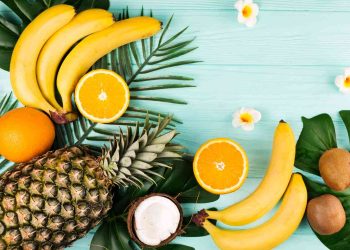Did you know that what you eat can have a profound impact on your brain health? It’s true! While we often think of our diet in terms of physical health or weight management, the connection between nutrition and cognitive function is just as crucial. Among the various food groups, fish stands out, particularly for its ability to enhance brain circulation.
In this article, we’ll dive into five delicious fish dishes that not only tantalize your taste buds but also promote better brain circulation. Let’s explore how these meals can nourish your mind and body.
Contents
1. Salmon with Avocado Salsa
Why Salmon?
Salmon is often hailed as a superfood, and for good reason. This fatty fish is packed with omega-3 fatty acids, which are essential for brain health. Omega-3s help to form and maintain the brain’s cell membranes and improve blood circulation. A study published in the journal Frontiers in Aging Neuroscience found that higher omega-3 intake is associated with better cognitive function in older adults (Yurko-Mauro et al., 2010).
Recipe Overview
Ingredients:
- 2 salmon fillets
- 1 ripe avocado, diced
- 1 small onion, finely chopped
- 1 tomato, diced
- Juice of 1 lime
- Salt and pepper to taste
Instructions:
- Preheat the grill or oven to medium heat.
- Season the salmon fillets with salt and pepper.
- Grill for about 6-8 minutes on each side or until cooked through.
- In a bowl, combine avocado, onion, tomato, lime juice, salt, and pepper.
- Serve the grilled salmon topped with avocado salsa.
Pros and Cons
Pros:
- Rich in omega-3 fatty acids.
- Quick and easy to prepare.
- Avocado adds healthy fats and fiber.
Cons:
- Salmon can be expensive.
- Some may be concerned about mercury levels in fish; however, wild-caught salmon is generally low in mercury.
2. Sardine Pasta with Spinach and Garlic
Why Sardines?
Sardines are often overlooked but are a powerhouse of nutrients. They are not only high in omega-3s but also provide vitamin B12, which is crucial for brain health. Research indicates that vitamin B12 deficiency can lead to cognitive decline (O’Leary & Dunne, 2016).
Recipe Overview
Ingredients:
- 200g whole grain pasta
- 1 can of sardines in olive oil
- 2 cups fresh spinach
- 3 cloves garlic, minced
- Red pepper flakes (optional)
- Olive oil, salt, and pepper to taste
Instructions:
- Cook the pasta according to package instructions.
- In a pan, heat olive oil and sauté garlic until fragrant.
- Add sardines and spinach, cooking until the spinach wilts.
- Drain the pasta and mix it with the sardine mixture.
- Season with red pepper flakes, salt, and pepper.
Pros and Cons
Pros:
- Quick and budget-friendly.
- High in omega-3s and B12.
- Whole grain pasta adds fiber.
Cons:
- Sardines have a strong flavor that may not appeal to everyone.
- Canned options can be high in sodium; choose low-sodium varieties if possible.
3. Mackerel Salad with Chickpeas and Lemon Dressing
Why Mackerel?
Mackerel is another fatty fish high in omega-3s and vitamin D, which plays a role in brain function and mood regulation. A study in Nutrients suggests that vitamin D may help protect against neurodegenerative diseases (Berridge, 2017).
Recipe Overview
Ingredients:
- 1 can of mackerel in olive oil
- 1 can of chickpeas, rinsed and drained
- 1 cucumber, diced
- 1 bell pepper, diced
- Juice of 1 lemon
- Olive oil, salt, and pepper to taste
Instructions:
- In a large bowl, combine mackerel, chickpeas, cucumber, and bell pepper.
- Drizzle with lemon juice and olive oil.
- Season with salt and pepper, tossing gently to combine.
Pros and Cons
Pros:
- Easy to make and packed with protein.
- Chickpeas add fiber and keep you full.
- Refreshing and light—great for lunch!
Cons:
- The strong flavor of mackerel may not be for everyone.
- Canned fish can sometimes have a fishy smell.
4. Tuna Quinoa Bowl
Why Tuna?
Tuna is not only a great source of protein but also contains significant amounts of omega-3 fatty acids. Additionally, it’s rich in selenium, an antioxidant that helps protect the brain from oxidative stress (Gomez-Pinilla, 2008).
Recipe Overview
Ingredients:
- 1 cup quinoa, cooked
- 1 can of tuna in water, drained
- 1 cup cherry tomatoes, halved
- 1 avocado, diced
- 1/4 cup chopped parsley
- Olive oil, salt, and pepper to taste
Instructions:
- In a bowl, mix the cooked quinoa with tuna, tomatoes, avocado, and parsley.
- Drizzle with olive oil and season with salt and pepper.
- Serve chilled or at room temperature.
Pros and Cons
Pros:
- Nutrient-dense and filling.
- Quinoa is gluten-free and high in protein.
- Versatile—add any veggies you like!
Cons:
- Tuna can be high in mercury; choose light tuna or limit consumption.
- Requires cooking quinoa, which may take extra time.
5. Trout with Almonds and Broccoli
Why Trout?
Trout is another excellent source of omega-3s and is often considered a healthier alternative to red meat. It’s also rich in protein and provides essential amino acids that your brain needs to function optimally (Kris-Etherton et al., 2002).
Recipe Overview
Ingredients:
- 2 trout fillets
- 1 cup broccoli florets
- 1/4 cup sliced almonds
- 2 tablespoons olive oil
- Lemon slices, salt, and pepper to taste
Instructions:
- Preheat the oven to 375°F (190°C).
- Place trout on a baking sheet, drizzle with olive oil, and season with salt and pepper.
- Scatter broccoli and almonds around the trout.
- Bake for about 20 minutes or until the trout flakes easily with a fork.
Pros and Cons
Pros:
- Simple and quick to prepare.
- Rich in omega-3s and antioxidants from broccoli and almonds.
- A great way to incorporate more vegetables into your diet.
Cons:
- Fresh trout can be pricey and less accessible.
- Some may dislike the taste or texture of trout.
FAQs
1. How often should I eat fish for brain health?
Aim for at least two servings of fatty fish per week to reap the benefits of omega-3 fatty acids.
2. Are there any risks associated with eating fish?
Certain fish can contain high levels of mercury. It’s best to choose low-mercury options like salmon, sardines, and trout.
3. Can I get omega-3s from sources other than fish?
Yes! Plant-based sources like flaxseeds, chia seeds, and walnuts also provide omega-3s, though they contain ALA, which the body must convert to EPA and DHA.
4. What other foods can help with brain circulation?
In addition to fish, foods rich in antioxidants (like berries), dark chocolate, and leafy greens can also support brain health.
Conclusion
Incorporating fish into your diet is a delicious way to enhance brain circulation naturally. From the rich flavors of salmon to the unique taste of sardines, these dishes not only nourish your body but also support cognitive function. Let’s be real—who wouldn’t want to boost their brain power while enjoying a tasty meal?
So next time you’re planning your week’s meals, consider adding one (or all!) of these fish dishes to your menu. Your brain will thank you!
This article is for educational purposes only and is not a substitute for professional medical advice. Always consult a qualified healthcare provider before making changes to your health routine.
References
- Berridge, M. J. (2017). Vitamin D and neurodegeneration. Nutrients, 9(2), 145. https://doi.org/10.3390/nu9020145
- Gomez-Pinilla, F. (2008). Brain foods: the effects of nutrients on brain function. Nature Reviews Neuroscience, 9(7), 568-578. https://doi.org/10.1038/nrn2421
- Kris-Etherton, P. M., Harris, W. S., & Appel, L. J. (2002). Fish consumption, fish oil, omega-3 fatty acids, and cardiovascular disease. Circulation, 106(21), 2747-2757. https://doi.org/10.1161/01.CIR.0000038493.65177.94
- O’Leary, F., & Dunne, J. (2016). Vitamin B12 deficiency and cognitive impairment: a review. Journal of Neurology, 263(12), 2367-2376. https://doi.org/10.1007/s00415-016-8260-3
- Yurko-Mauro, K., McCarthy, D., & Rom, D. (2010). Beneficial effects of docosahexaenoic acid on cognition in age-related cognitive decline. Frontiers in Aging Neuroscience, 2, 9. https://doi.org/10.3389/fnagi.2010.00009
Get Your FREE Natural Health Guide!
Subscribe now and receive our exclusive ebook packed with natural health tips, practical wellness advice, and easy lifestyle changes — delivered straight to your inbox.














